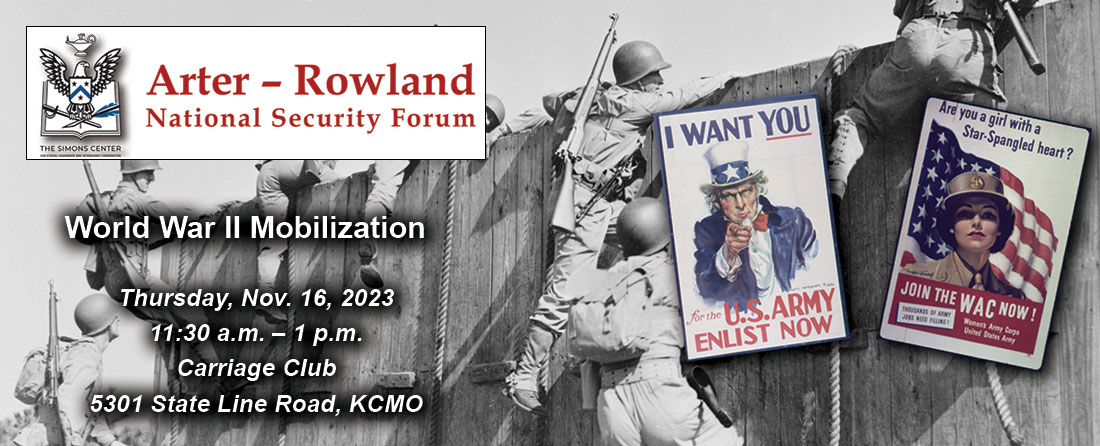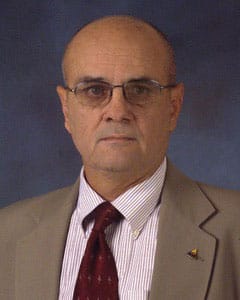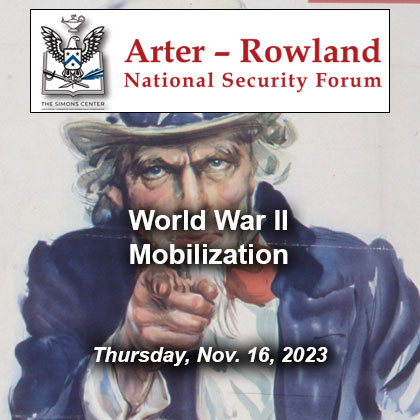 In this presentation of the Forum, Col. (Ret.) Gregory Fontenot will discuss the means and methods of mobilizing the U.S. Army in World War II. Armies are ephemeral in that they take great effort and great cost to raise, but can be eliminated by design in a very short time. In August 1945 just over 12 million Americans were in uniform in all of the services. Of these, 5,867,958 served in the ground forces of the U.S. Army. In August 1945 the U.S. Army had 89 divisions, all of which were overseas, or in the case of the Philippine Division, languishing and dying in Japanese prison camps. By 1947 the Army had shrunk to 684,000 and in 1950 the U.S. Army had ten understrength regular Army divisions. Today the Army is struggling to man the force and failed to reach its 2022 end strength goal of 485,000 troops according to the Congressional Research Service.
In this presentation of the Forum, Col. (Ret.) Gregory Fontenot will discuss the means and methods of mobilizing the U.S. Army in World War II. Armies are ephemeral in that they take great effort and great cost to raise, but can be eliminated by design in a very short time. In August 1945 just over 12 million Americans were in uniform in all of the services. Of these, 5,867,958 served in the ground forces of the U.S. Army. In August 1945 the U.S. Army had 89 divisions, all of which were overseas, or in the case of the Philippine Division, languishing and dying in Japanese prison camps. By 1947 the Army had shrunk to 684,000 and in 1950 the U.S. Army had ten understrength regular Army divisions. Today the Army is struggling to man the force and failed to reach its 2022 end strength goal of 485,000 troops according to the Congressional Research Service.
This event is only open to members of the ARNSF. If you are not a member but are interested in joining, contact Bob Ulin at rulin@cgscf.org.
 Colonel (Ret.) Gregory Fontenot served in the U.S. Army as an armor officer for more than 28 years at duty locations in the United States, Europe, the Balkans and Southwest Asia. His key assignments included commanding a battalion during Operations Desert Shield and Storm and a brigade in Bosnia. As an educator he taught history at the U.S. Military Academy at West Point and was director of the School of Advanced Military Studies at Fort Leavenworth, Kansas. In his last assignment he commanded the Battle Command Training Program at Fort Leavenworth.
Colonel (Ret.) Gregory Fontenot served in the U.S. Army as an armor officer for more than 28 years at duty locations in the United States, Europe, the Balkans and Southwest Asia. His key assignments included commanding a battalion during Operations Desert Shield and Storm and a brigade in Bosnia. As an educator he taught history at the U.S. Military Academy at West Point and was director of the School of Advanced Military Studies at Fort Leavenworth, Kansas. In his last assignment he commanded the Battle Command Training Program at Fort Leavenworth.
After his military retirement in 1999, Fontenot embarked on a second career as a Department of the Army Civilian in the military intelligence specialty. In this capacity he served as director of the U.S. Army Training and Doctrine Command’s wargaming directorate and later as director of the University of Foreign Military and Cultural Studies, the Army’s “red teaming” school. He served on campaign plan assessment teams in Iraq in 2010 and Afghanistan in 2011. He left the civil service in 2013 to pursue his interest in writing military history.
Fontenot has authored numerous articles and book reviews in Army magazine, Military Review and other publications, and is co-author of On Point: The United States Army in Operation Iraqi Freedom in 2003. In 2017 he published The 1st Infantry and the US Army Transformed: The Road to Victory in Desert Storm 1970-1991, which earned him the 2017 Army Historical Foundation Distinguished Writing Award for Unit History. In 2019 he published Loss and Redemption at St Vith: The 7th Armored Division in the Battle of the Bulge and his most recent work, No Sacrifice too Great: The 1st Infantry Division in World War II was published in June 2023.
Fontenot continues to support the U.S. Army as a consultant on threat emulation and leadership.
Questions about registration? – Contact Lora Morgan, lora@cgscf.org or call 913-651-0624.
For questions about the ARNSF contact Col. (Ret.) Robert Ulin, Simons Center Director, at rulin@cgscf.org or call 913-240-1495.
Please register below.
The Arter-Rowland National Security Forum is an exclusive professional information sharing and networking event exclusively for members of the forum and select invitees of the CGSC Foundation’s Simons Center and the Kansas City Chapter of the Association of the United States Army (KCAUSA), the co-hosts of the Forum. 
REGISTRATION IS CLOSED









